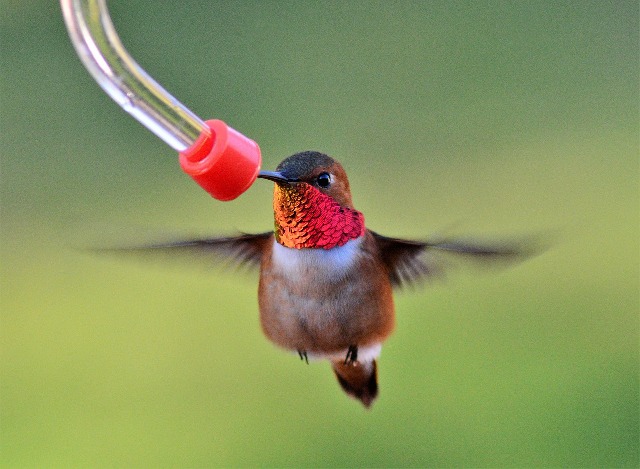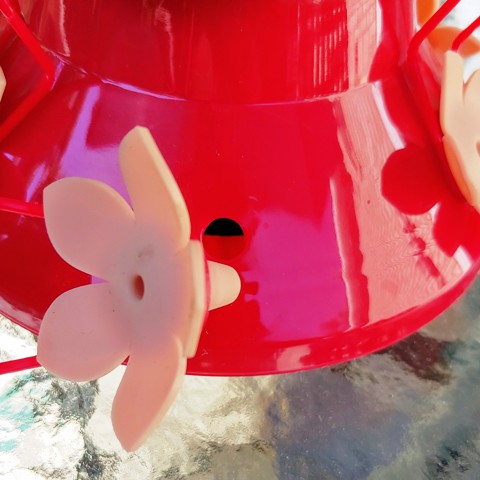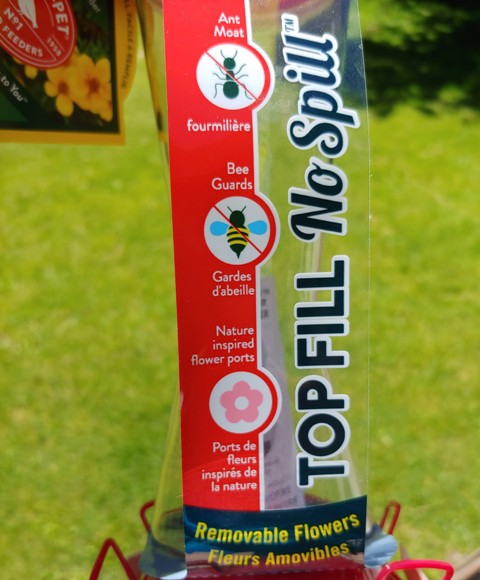The controversy about red dye in feeding nectar and whether it is safe for hummingbirds continues. Safe or not, the red dye isn’t necessary. I don’t add food coloring to my children’s food, and I try not to buy products with artificial coloring and flavorings, so why subject my birds to it? When feeding hummingbirds, maybe it is time to get the red out.

This post contains affiliate links. If you click through and make a purchase, we will earn a commission, at no additional cost to you. Read our full disclosure here.
Remove the Red Dye
Making hummingbird nectar is easy. It saves money (I’m all about that!) and the excess can be stored in the refrigerator. During hot weather, change the nectar frequently to prevent spoilage and fresh tasting for your hummers.
Recipe for Nectar
The recipe is easy and much more inexpensive than buying nectar packets. In a sauce pan combine:
4 cups of Water
1 cup of Sugar
Boil for one minute and completely cool before serving your backyard guests. Store the excess in the refrigerator in a glass, quart jar.
Feeder Cleaning

During hot weather, it is important to change your feeder frequently to keep the nectar fresh and your birds happy! The feeder should have removable parts for cleaning. Remove the little flowers and brush the holes thoroughly with a small brush. I use a larger brush with a tipped sponge to clean the bottle. Birds are subjective to chemicals and soap residue, so always rinse parts thoroughly before reusing.
Environmentally Friendly Feeders

Unfortunately, sweet nectar also attracts bees and ants. I hated how many dead bees I would find each time I changed the water. Purchasing a feeder with an ant moat and bee guards will take care of this nasty issue. The nectar stays cleaner too! After all, who wants a beverage with dead bodies floating in it? Ewww!
Benefits of Backyard Feeders

The simple act of putting out a bird feeder is a great way to unwind from the daily routine. Children learn the importance of caring for animals as well as learning to identify different types of bird species.
All birds are healthier when they have a supplement to the food they find in the wild. In addition, migratory birds will have stored extra energy for their long trip to their perspective winter homes. It is a good idea to leave a hummingbird feeder out well after the last of the flowers. This action will accommodate the late stragglers and provide them with needed energy for their migratory flight.
Our favorite hummingbird feeder with bee guards and ant moat:
We welcome comments and backyard bird stories! Please remember this is a family-friendly site.



